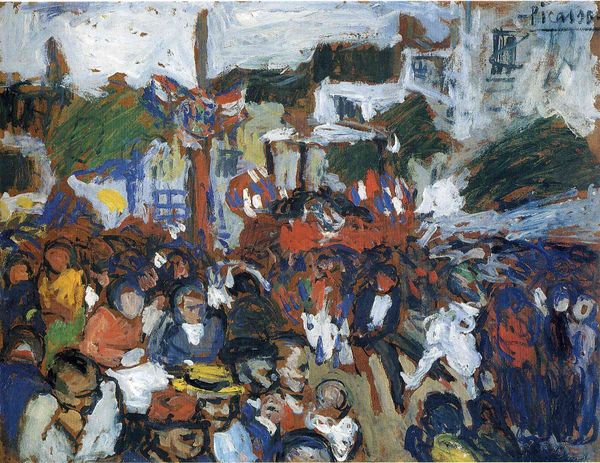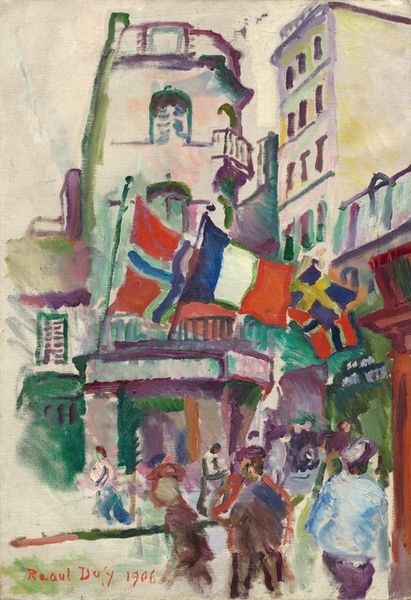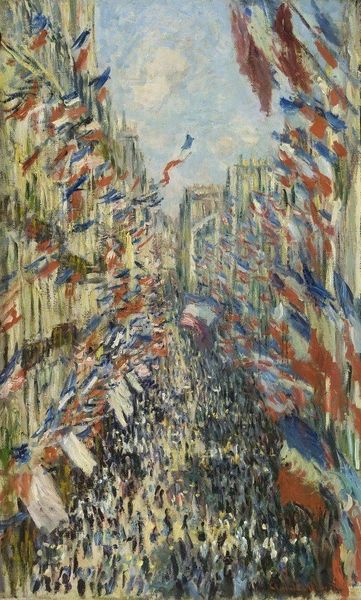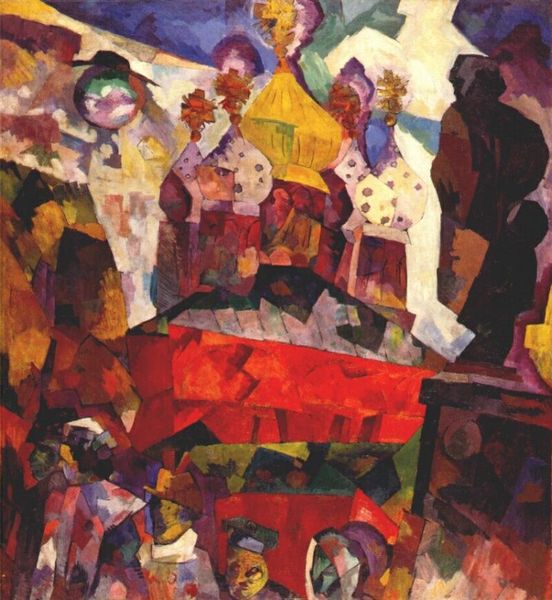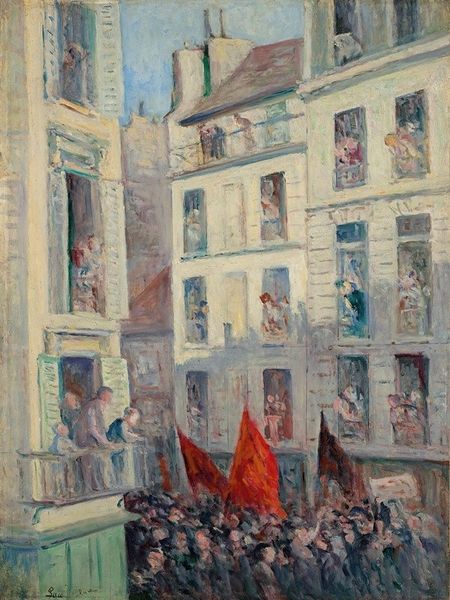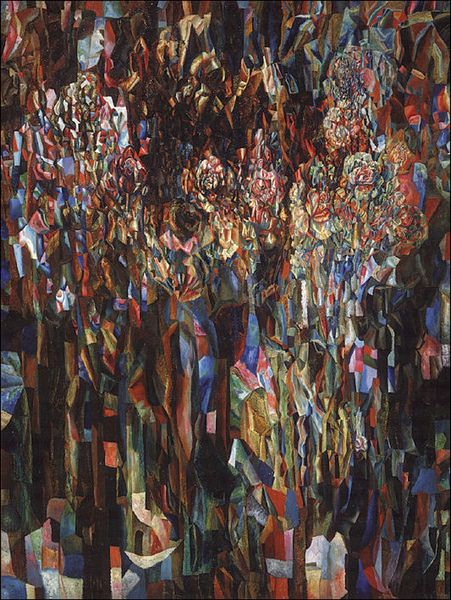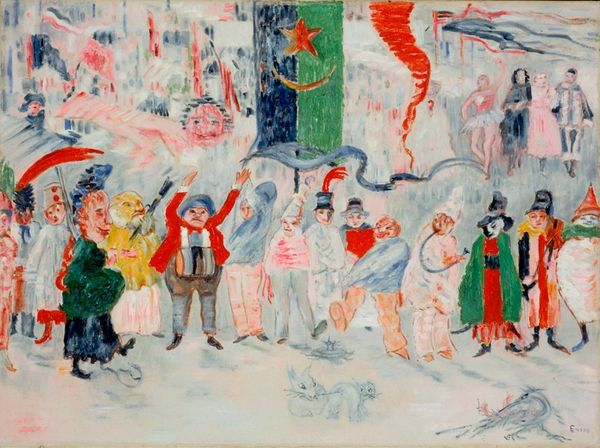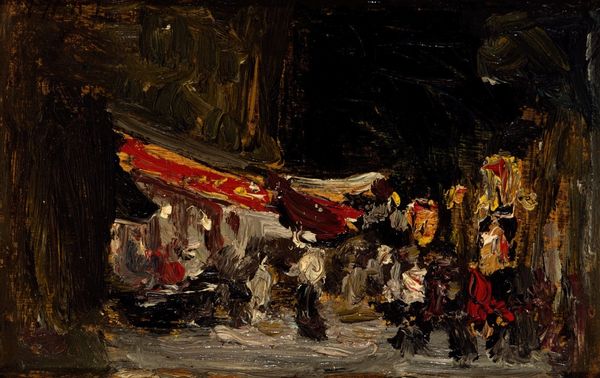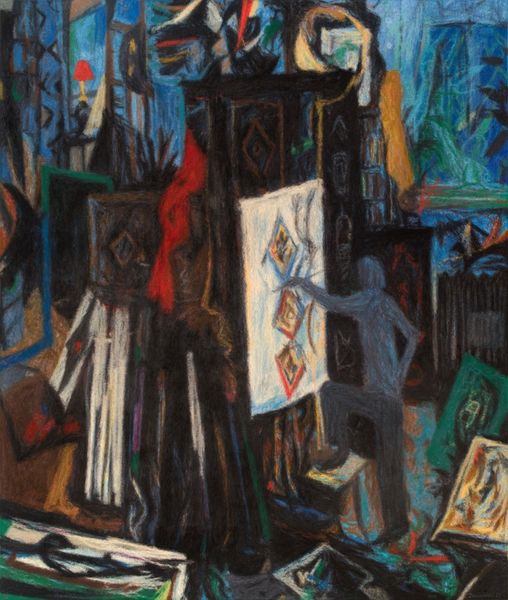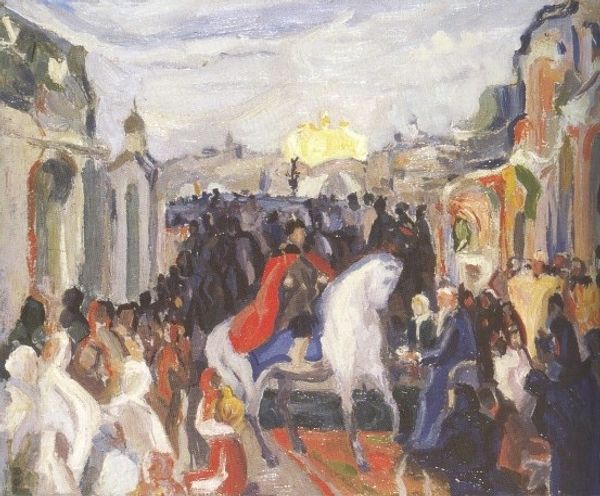
Copyright: Public domain
Editor: So, here we have Van Gogh's "The Fourteenth of July Celebration in Paris," painted in 1886. It’s oil on canvas, depicting a street scene. The colours are really vibrant, almost jarring. What's your interpretation of this particular piece, especially considering the historical context? Curator: Well, let’s consider the symbolism inherent in depicting a national holiday. The Fourteenth of July represents the storming of the Bastille, a pivotal moment in the French Revolution. But Van Gogh, a Dutchman, painting a French national celebration while living in Paris… It raises questions of identity and belonging, doesn’t it? He’s an outsider looking in. Does the exuberance feel…earned, or is there a layer of critical distance? Editor: That's interesting. I hadn't considered the outsider perspective. The brushstrokes are so energetic, almost chaotic. Could that be reflecting something about the social climate of Paris at the time? Curator: Absolutely. Think about the political instability of late 19th century France, the rise of nationalism, the brewing social tensions. This isn’t just a pretty picture of a street festivity. Look at the way he renders the flags – fragmented, almost aggressive. He might be trying to express something about collective identity and national fervor. Editor: I see what you mean. They seem less celebratory and more like abstract shapes competing for attention. So, you’re suggesting that Van Gogh's personal experiences and the broader socio-political context are intertwined here? Curator: Precisely! Art never exists in a vacuum. Understanding the intersectional layers of history, identity, and politics is key to unpacking its deeper meanings. Do you feel your own understanding has evolved after discussing that socio-political framework? Editor: Definitely. I'm now considering how celebrations themselves can be forms of complex social expression rather than simply festive events. Curator: Indeed. And by examining them through art, we can begin to address significant social structures and identities.
Comments
No comments
Be the first to comment and join the conversation on the ultimate creative platform.
